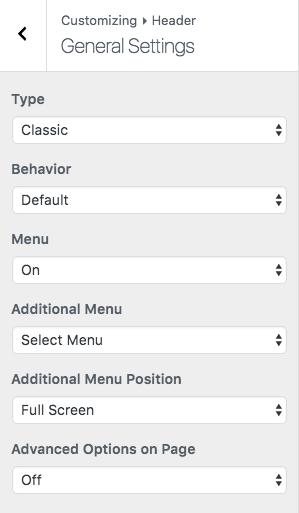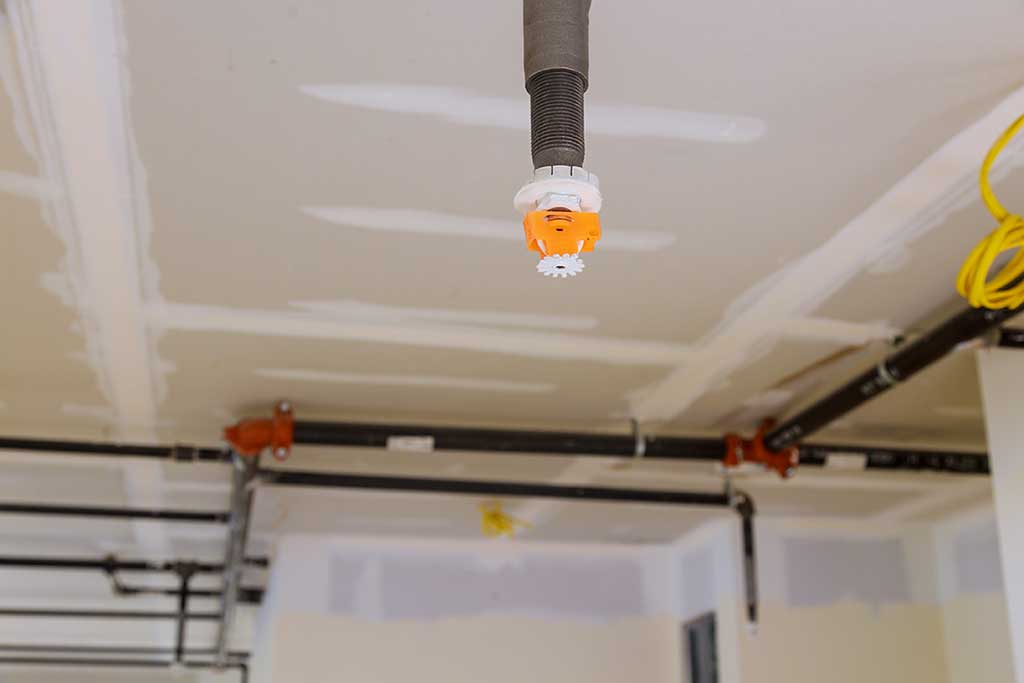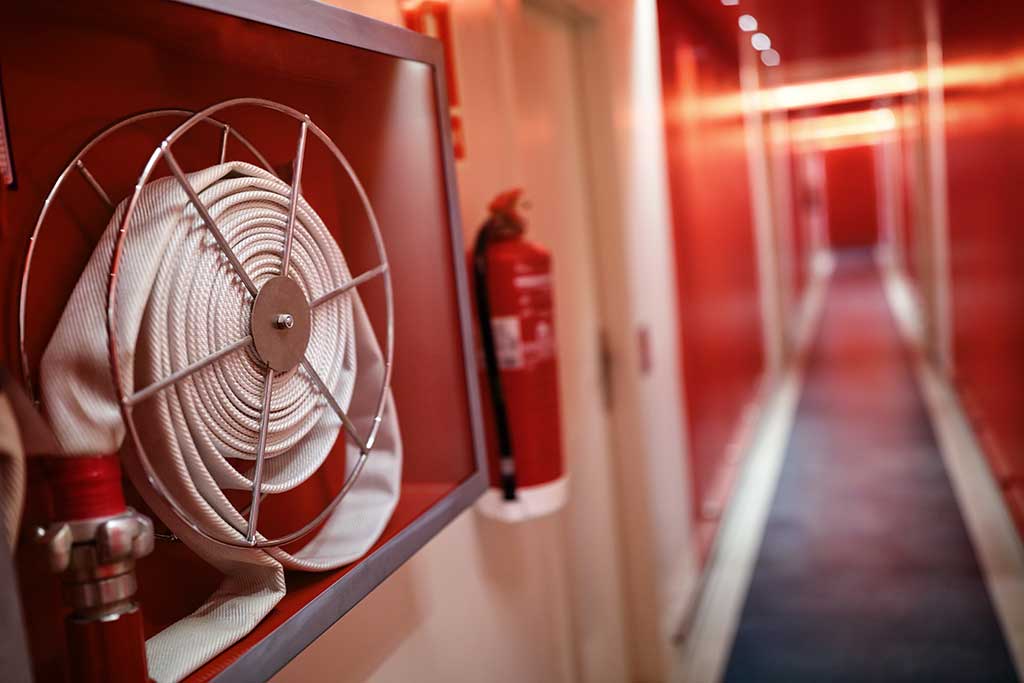Mastering Fire Sprinklers and Fire Detection: Essential Strategies for Healthcare Facility Safety
Healthcare facilities stand as pillars of care and recovery. They provide a haven for patients and medical professionals alike. But within their walls lie unique challenges that demand unwavering attention to safety protocols – particularly regarding fire safety. The use of delicate medical equipment, vulnerable patients, and a complex infrastructure creates an environment where fire safety takes on a pronounced significance. In this context, the installation and use of essential fire protection emerges as invaluable components of safeguarding healthcare facilities.
Unique Challenges of Healthcare Facilities
Unlike many other settings, healthcare facilities face distinctive challenges that stem from their diverse activities and sensitive inhabitants. These challenges include the presence of oxygen-rich environments, intricate electronic systems, and patients who may have limited mobility or be unable to evacuate swiftly. These facilities often house an array of materials, ranging from flammable chemicals for medical use to densely packed paper records. Each of these amplifies the potential risks posed by fires and underscores the need for a multi-faceted fire safety approach.
Importance of Fire Sprinklers and Detection Systems in These Settings
Fire sprinklers and advanced fire detection systems emerge as important safeguards within healthcare facilities due to their proactive and reactive roles in fire prevention and containment. Fire sprinklers, when strategically installed, can promptly douse flames and limit their spread. This allows medical personnel additional time to evacuate patients or implement containment strategies. These systems are tailored to activate only in the vicinity of a detected fire. That minimizes damage caused by accidental discharges.
Accompanying fire sprinklers are cutting-edge fire detection systems. These technologies use sensors to swiftly identify smoke, heat, or unusual changes in the environment. When used with intelligent alarm systems, they can automatically trigger notifications to both onsite staff and emergency responders. This streamlines the response process and minimizes potential delays. These systems are calibrated to discern between regular activities and actual fire events. That helps to curb false alarms that could divert resources away from genuine emergencies.
Mastering Fire Sprinklers and Fire Detection: Essential Strategies for Healthcare Facility Safety
Fire safety is a major concern in healthcare facilities, where the combination of vulnerable patients, complicated infrastructures, and the potential for rapidly spreading flames can cause catastrophic consequences. To mitigate the risk of fire and better guarantee the safety of patients, staff, and visitors, healthcare facilities must use strategies that combine fire sprinklers and advanced fire detection systems.
Understanding Fire Hazards in Healthcare Facilities
Healthcare facilities — ranging from hospitals to nursing homes — house a unique blend of fire hazards that require specialized attention. While the specific hazards can vary, some common factors contribute to the increased risk of fires in these settings:
- Complex Infrastructure: Healthcare facilities are often massive structures with confusing layouts, making fire response and evacuation challenging during emergencies.
- Electrical Systems: The heavy reliance on medical equipment, electronic devices, and wiring increases the likelihood of electrical fires.
- Combustible Materials: Hospitals are filled with combustible materials like bedding, linens, paper files, oxygen cylinders, and medical supplies, which can fuel the spread of fires.
- Patient Vulnerability: Many patients in healthcare facilities have limited mobility and may require assistance in evacuating during emergencies. That can lead to delays and complications.
Past Incidents and Lessons Learned
Several past incidents have underscored the critical need for robust fire safety measures in healthcare facilities:
- King’s Cross Fire (1987): This tragic incident occurred in the London Underground, but its lessons are relevant to healthcare. The fire was worsened by the lack of effective fire suppression systems, leading to rapid fire spread and multiple casualties.
- Nursing Home Fires: Numerous nursing home fires have highlighted the vulnerability of elderly residents. The 2003 fire at a nursing home in West Hartford, Connecticut, claimed 16 lives, emphasizing the need for better fire prevention and response protocols.
- Hospital Fires: In 2011, a fire at the AMRI Hospital in Kolkata, India, resulted in a high death toll due to insufficient fire safety measures. The incident emphasized the importance of proactive fire detection and rapid response.
These incidents drive home the dire consequences of neglecting fire safety measures in healthcare facilities. Fortunately, they also provide valuable lessons that can guide healthcare administrators in creating effective strategies to prevent and manage fires.
Choosing the Right Fire Sprinkler System
Choosing the appropriate system and using effective fire detection mechanisms are good strategies for safeguarding the lives of patients, staff, and the infrastructure itself.
Types of Fire Sprinkler Systems Suitable for Healthcare Facilities
Healthcare facilities are complex environments with unique challenges in fire safety. Selecting an appropriate fire sprinkler system is huge. It can mean the difference between rapid containment and catastrophic consequences. Two typical kinds of fire sprinkler systems are often contemplated for healthcare facilities: Dry pipe systems and wet pipe systems.
- Wet Pipe Systems: These systems are the most frequently chosen for healthcare facilities thanks to their simplicity and reliability. They consist of water-filled pipes connected to sprinkler heads, which are heat-sensitive and activate when exposed to high temperatures. Wet pipe systems are perfect for areas where the ambient temperature is controlled and maintained above freezing (they are susceptible to freezing in colder environments).
- Dry Pipe Systems: As opposed to wet pipe systems, dry pipe systems are filled with pressurized nitrogen or air instead of water. A valve holds back the water, and when a sprinkler head is activated due to heat, the valve releases the air or nitrogen, allowing water to flow through the system. These systems are great for areas where freezing is a concern (there is no water in the pipes to freeze). But they may have a slightly slower response time compared to wet pipe systems.
Considerations When Selecting a Sprinkler System
Several factors come into play when selecting the right fire sprinkler system for a healthcare facility:
- Building Layout and Design: The facility’s layout, size, and use patterns determine the optimal sprinkler system. Complex layouts might benefit from pre-action systems that require two triggering events before water is released, reducing the risk of accidental discharges.
- Risk Assessment: Conducting a thorough risk assessment is important to determine the areas with the highest fire risk. Critical patient care areas, high-tech equipment rooms, and storage areas should be given priority.
- Temperature Conditions: Think about the facility’s temperature conditions. Wet pipe systems are good for areas where temperatures are consistently above freezing, while dry pipe systems are better for colder environments.
- Maintenance and Cost: The chosen system should align with the facility’s maintenance capabilities and budget. While wet pipe systems are generally more cost-effective, the specific needs of the healthcare facility might call for the installation of more sophisticated systems.
- Regulatory Compliance: Healthcare facilities are subject to strict regulations. The fire system must comply with industry standards and local fire codes.
- Emergency Response: Combining the sprinkler system with fire detection and alarm systems guarantees a swift response to any fire event, minimizing potential damage.
Effective Fire Detection in Healthcare Settings
Fire safety is of major importance in healthcare facilities. The vulnerability of patients, staff, and valuable medical equipment calls for advanced strategies to prevent and manage fires. Among the critical components of an effective fire safety plan are modern fire sprinklers and fire detection systems. By using these technologies, healthcare facilities can significantly improve their safety measures.
Effective Fire Detection in Healthcare Settings
In the area of healthcare, where the stakes are high, using reliable fire detection systems is non-negotiable. The choice of fire detection systems depends on the facility’s specific needs and layout. Two primary types of fire detection systems stand out:
- Automatic Smoke Detectors: These detectors are designed to respond to the presence of smoke (often the earliest indication of a fire). They can be further categorized into ionization and photoelectric detectors. Ionization detectors are more responsive to fast burning, flaming fires, while photoelectric detectors are best for detecting smoldering fires that produce larger smoke particles.
- Heat Detectors: These devices trigger an alarm when they sense a significant rise in temperature (typically above a preset threshold). Heat detectors are particularly good for areas prone to false alarms (think kitchens or areas with high humidity levels, where smoke detectors might be triggered unnecessarily).
Best Practices for Fire Detection in Healthcare Facilities
Using an effective fire detection system in a healthcare facility requires careful consideration and attention to best practices. Here are some useful strategies:
- Comprehensive Coverage: Design the fire detection system to cover all critical areas, including patient rooms, corridors, storage rooms, and utility areas. Special attention should be given to areas where fire hazards are higher (kitchens or areas with electrical equipment).
- Integration with Building Systems: Integrate the fire detection system with other building systems (like HVAC and access control). This allows for coordinated responses during emergencies (like shutting down air handling units to prevent smoke spread).
- Regular Maintenance: Regular maintenance and testing of fire detection systems are critical to assure their proper functioning. Do routine inspections, sensor testing, and battery replacements as necessary to keep the system in tip-top condition.
- Employee Training: Educate healthcare staff about the fire detection system’s operation and response procedures. Conduct regular fire drills to familiarize employees with evacuation routes and procedures.
- Adherence to Codes and Standards: Stay updated with local fire safety codes and standards specific to healthcare facilities. Compliance with these regulations not only helps guarantee safety but also helps avoid legal and financial issues.
- Remote Monitoring: Use remote monitoring capabilities. These can provide real-time alerts to facility managers or external monitoring services. This timely information can hurry response efforts and minimize potential damage.
Standards and Codes for Healthcare Fire Safety
When it comes to ensuring the safety of healthcare facilities, mastering fire sprinklers and fire detection systems is of major importance. The special nature of healthcare facilities – where the presence of vulnerable patients and critical equipment calls for swift and effective fire response strategies – demands a comprehensive understanding of standards and codes that define fire safety in these settings. Two key aspects to focus on are adhering to the specific standards set forth by the National Fire Protection Association (NFPA) and complying with local fire safety codes and regulations.
NFPA Standards for Healthcare Facilities Fire Safety
The NFPA has developed a series of standards specifically designed to address fire safety concerns in healthcare facilities. Among the most critical standards are NFPA 101: Life Safety Code, NFPA 99: Health Care Facilities Code, and NFPA 13: Standard for the Installation of Sprinkler Systems.
- NFPA 101: This code outlines minimum requirements for new and existing healthcare occupancies to help guarantee the protection of patients, staff, and visitors in the event of a fire. It covers everything from means of escape to fire detection and suppression systems. It provides an all-inclusive approach to healthcare facility safety.
- NFPA 99: Focusing on health care facilities’ infrastructure, this standard deals with electrical systems, gas equipment, medical gas systems, and fire protection systems. Its primary goal is to reduce potential hazards and assure that patient care remains uninterrupted during emergencies.
- NFPA 13: This standard lays out the requirements for the design, installation, and maintenance of sprinkler systems. It plays an important part in protecting both the facility’s physical structure and the individuals within it by quickly containing and suppressing fires.
Local Fire Safety Codes and Regulations
Besides adhering to NFPA standards, healthcare facilities must also comply with local fire safety codes and regulations. Local authorities often have specific requirements that apply to unique geographical and environmental factors. These codes can include evacuation plans, fire department access, building materials, and emergency response protocols.
Local codes and regulations are designed to align with national standards and address regional challenges. Healthcare facility managers should establish open communication channels with local fire departments and fire safety officials to make sure that their fire protection systems are up to date and adhere to local requirements.
Fire Safety Training for Healthcare Staff
Fire safety within healthcare facilities is of major importance, given the vulnerable nature of patients and the complex framework that houses them. Guaranteeing the safety of patients, staff, and the facility itself requires an approach that includes mastering the use of fire sprinklers and fire detection systems. A critical aspect of this undertaking is providing proper fire safety training to healthcare staff, combined with a stellar training program that covers all required components.
Importance of Fire Safety Training for Healthcare Staff
The significance of fire safety training for healthcare staff cannot be stressed enough. Healthcare facilities house patients who may be immobile, have limited mobility, or require specialized care. During a fire emergency, their evacuation is not only challenging but also time sensitive. High-quality training equips healthcare staff with the knowledge and skills needed to swiftly and safely evacuate patients, prevent panic, and respond appropriately to fire emergencies.
Components of an Effective Fire Safety Training Program
To assure the success of a fire safety training program for healthcare staff, several important components must be used:
- Fire Prevention and Control: Staff should be educated about fire prevention strategies. This includes safe handling of flammable materials, proper disposal of hazardous waste, and regular maintenance of electrical equipment to prevent short circuits.
- Emergency Response Protocols: Clear and well-defined emergency response protocols should be set up, detailing roles and responsibilities of staff during a fire emergency. This includes instructions for assisting those patients with mobility issues, guiding visitors to safe exits, and working with emergency services.
- Fire Sprinkler Systems: Staff should be trained to understand the function and operation of fire sprinkler systems. This includes knowing how to activate sprinklers manually and an understanding of the automatic activation process.
- Fire Detection Systems: Familiarity with fire detection systems (like smoke detectors and alarms) is critical. Staff should be capable of recognizing different alarm signals, knowing the locations of alarms within the facility, and quickly alerting the necessary authorities.
- Evacuation Drills: Regular evacuation drills are needed to assess the preparedness of healthcare staff and the effectiveness of the training program. These drills allow staff to practice patient evacuation, identify any shortcomings, and fine tune their response strategies.
- Communication Skills: Good communication is important during a fire emergency. Staff should be trained in giving clear instructions to patients, colleagues, and emergency responders. This helps with a smooth and organized evacuation process.
- Patient-Centric Approach: Special attention should be given to training staff to prioritize patient safety and comfort during evacuations. This involves understanding the specific needs of patients and customizing evacuation plans appropriately.
Regular Maintenance and System Checks
Healthcare facilities play an important part in society. They provide medical care and assistance to those in need. But these spaces are not immune to fire hazards. That’s why it’s critical to prioritize fire safety through an all-inclusive approach that involves the mastery of fire sprinklers and fire detection systems. By using the best strategies, healthcare facilities can better guarantee the safety and well-being of patients, staff, and visitors alike.
Maintaining Fire Sprinklers and Fire Detection Systems
Maintenance is important to a system’s effectiveness in the event of a fire. Regular maintenance and system checks should be a part of a healthcare facility’s safety protocols. These systems are complicated and require constant attention to make sure they function as they should when needed most. Regular inspections, done by qualified professionals, can identify any issues (think blockages, leaks, or malfunctions) that might affect the systems’ ability to respond quickly and effectively to a fire emergency.
Regular System Testing and Updates
Fire safety technology is constantly evolving. So, healthcare facilities must keep up with the latest advancements to assure optimal protection. Regular system testing and updates are important to incorporate new features and upgrades that improve performance. This might involve modernizing detection algorithms, employing smart technologies for faster response times, or installing more efficient sprinkler heads. By staying current with technology, healthcare facilities can better safeguard their environment and the lives within it.
Seeking Expert Fire Protection Assistance
Commercial fire protection is a multifaceted undertaking that requires specialized knowledge and expertise. To address this aspect, ASCO Fire offers comprehensive fire safety solutions tailored to various needs. From the initial planning and setup of fire sprinkler and fire alarm systems to thorough examinations, upkeep, and restoration of fire safety mechanisms, ASCO Fire is a reliable partner in assuring optimal fire protection.
In addition to its technical services, ASCO Fire also provides guidance on fire code compliance and matters related to safety standards. Businesses, factories, and educational establishments can benefit from ASCO Fire’s expertise in fire protection, creating a safer environment for everyone involved.
For inquiries and assistance, reach out to ASCO Fire at 973-633-7300 or utilize the convenient online form available on their website. Remember, effective fire protection is not only a legal obligation but also a moral responsibility to prioritize the safety and well-being of all individuals within commercial premises.


